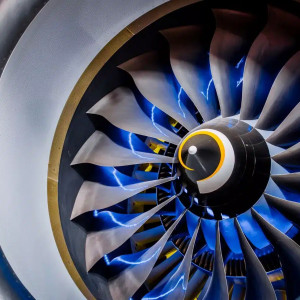Why does emerging electric aircraft engine technology sound so annoying?


Researchers from the University of Bristol[1] and the University of Salford[2] have discovered why boundary layer ingesting (BLI) engines--used in future electric and hybrid aircraft--produce irritating noise and how to reduce it. This breakthrough could improve the sound quality of emerging aircraft technologies.
- Advertisement -Researchers have analyzed how turbulent airflow interacts with engine components in boundary layer ingesting (BLI) systems, creating two unpleasant noise patterns. The study highlights hay stacking, a phenomenon where turbulent flow scatters sound energy across multiple frequencies, making the noise more irritating.
This more profound understanding of aerodynamic sound generation could help engineers design quieter aircraft engines[3]. Curvature distorts the flow, exposing only the blade tips to turbulence. Since the duct contributes the most to noise at low thrust, the primary noise source comes from turbulent flow interacting with the duct's acoustic field--causing duct haystack.
At high thrust (during takeoff), more potent fan suction disrupts the boundary layer, pulling in high-energy, unstable, turbulent flow[4] across more of the blade span. This intense interaction between distorted airflow and rotating blades leads to fan hay stacking, where unsteady airflow is repeatedly sliced by a large portion of the blade span, producing a distinct and unpleasant noise pattern.
Designing an ultra-aerodynamic bike using AI[5]
- Advertisement -Dr. Feroz Ahmed, the lead researcher, explains that haystacking creates aircraft noise that feels irritating, not just loud.
Engineers can design aircraft that honestly sound quieter by connecting airflow patterns to how people perceive sound. These findings provide a new approach to developing embedded engines that improve public acceptance of future urban air mobility. Researchers used a high-fidelity wind tunnel to gather detailed noise and airflow data across flight phases.
They linked hay stacking noise to its aerodynamic cause and human perception using advanced tools like hot-wire anemometry and pressure sensors. Their findings offer design guidance for future aircraft, including large-scale transport models like Airbus ZEROe, ONERA NOVA, NASA/MIT Aurora D8, Airbus Nautilus, and MITSAX-40. These insights also support electric vertical takeoff and landing (eVTOL) aircraft manufacturers, helping meet the EU's FlightPath 2050 goal of reducing aircraft noise[6] by 65%.
This research could lead to quieter engines for electric planes and air taxis. The researchers plan to create aerodynamic and acoustic control strategies to minimize fan and duct haystack. They also aim to extend their analysis to other propulsion systems that involve turbulent airflow ingestion, helping pave the way for quieter aircraft in the future.
Journal Reference:
- Feroz Ahmed, Carlos Ramos-Romero, Antonio J.
Torija and Mahdi Azarpeyvand.
Aeroacoustics and psychoacoustics characterization of a boundary layer ingesting ducted fan. Npj Acoustics.
References
- ^ University of Bristol (www.techexplorist.com)
- ^ University of Salford (www.techexplorist.com)
- ^ quieter aircraft engines (www.techexplorist.com)
- ^ turbulent flow (www.techexplorist.com)
- ^ Designing an ultra-aerodynamic bike using AI (www.techexplorist.com)
- ^ aircraft noise (www.techexplorist.com)
- ^ Npj Acoustics (www.techexplorist.com)
- ^ 10.1038/s44384-025-00010-z (doi.org)